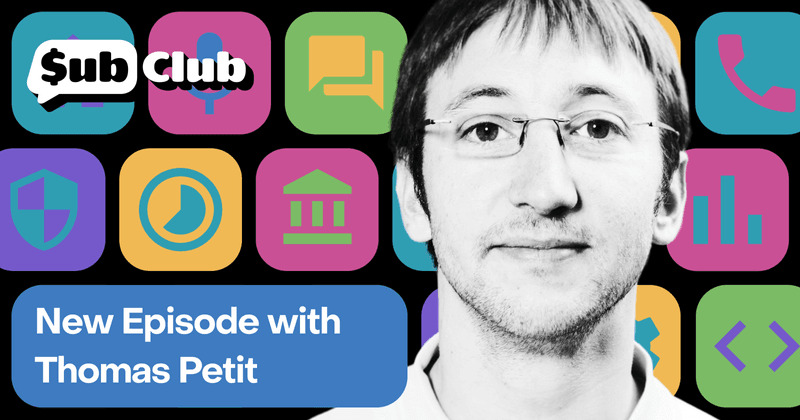What it takes to succeed with paid user acquisition — Podcast with Thomas Petit
Set goals before you start, understand your users, and get radical with your creative testing.

Does it ever make sense to start ad spending before you have a strong understanding of your audience?
No!
“Understanding your audience and what triggers them, and what your USP is, is something you have to think [about] before you spend the first dollar,” says independent app growth consultant Thomas Petit.
Thomas rejoins the Sub Club podcast for a special episode, which takes one of the deepest dives into successful app growth using paid user acquisition you’ll ever hear.
Over the past decade, Thomas has worked with hundreds of clients and helped manage tens of millions of dollars in ad spend.
“I’d say only gamble money you can afford to lose — maybe it’s going to come back, but maybe not. And even if it comes back, it may not come back in a week,” he highlights. “So can you actually afford to finance this? Maybe you need to change a bunch of things before you can actually get there. Cash availability is important.”
Start with clear objectives
Before you go near paid user acquisition (UA), set clear, realistic objectives. Too many venture into paid UA without a clear vision of their goals. One company Thomas worked with only funded initiatives promising at least a two-week return on investment (ROI).
Forget algorithmic platforms unless your monthly spend is at least $10-20k
A longtime contributor to the Sub Club community, Thomas explains that ad spend should be at least five-digits monthly to spend on Meta, Google, TikTok, and other big ad platforms. Anything less than $10-20k per month is going to make growth on platforms that use algorithmic optimization “doomed to fail, even if your product is fantastic,” he says.
Oftentimes you’re flying blind when it comes to conversions, because real attribution isn’t possible when the data is limited. In fact, the $0-50k zone is very tough to operate in. Thomas strongly recommends against advertising via algorithm-driven platforms when your budget is small: What might have succeeded ten years ago when processes were more manual wouldn’t stand a chance now.
Smaller budget? Try influencer marketing
But those with lower advertising budgets aren’t completely out of luck. Thomas emphasizes that smaller players should consider channels operable at a close scale, like non-algorithmic platforms and influencers. With influencers, you can easily choose one that fits both your market and your budget.
Test often and test radically
In any case, before spending a dollar on an ad, it’s crucial to really understand who your audience is and what drives them. Ads and creative that really works can be very unpredictable: Some of the most successful ads have been very indirect, with little or no identifiable transition. As such, you need to adopt a creed of radical, substantial testing and iteration to figure out what works for your app and what triggers the best response in your target audience.
Your ads need to convert not just engage
Just as importantly, any effective ad campaign needs to focus on conversion, not just user engagement. Low conversion coupled with high user engagement can still negatively affect overall performance. Giants like Facebook and Google also aim for a balance between user engagement and revenue, which means advertisers who efficiently convert impressions into actions are likely to be prioritized and may pay less per action.
On the podcast, Thomas discusses setting sensible goals for paid marketing, how to measure and learn from the results, and why a single ad creative can completely change the trajectory of a company.
You might also like
- Blog post
Scaling UA without wrecking your conversion rate: A Meta campaign playbook
A structured testing system helped one app lower cost-per-trial while targeting its most profitable users
- Blog post
Gamification in apps: A complete guide to using motivation to drive real value
Why streaks fall short and 11 apps getting gamification right
- Blog post
Apple’s June 2025 EU update: one entitlement, three fees, and CTF’s 2026 sunset
What apps in the EU should do after Apple’s DMA tweak.

